The Economics and Statistics Division maintains archives of previous publications for accountability purposes, but makes no updates to keep these documents current with the latest data revisions from Statistics Canada. As a result, information in older documents may not be accurate. Please exercise caution when referring to older documents. For the latest information and historical data, please contact the individual listed to the right.
<--- Return to Archive
For additional information relating to this article, please contact:
July 22, 2019POLICE REPORTED CRIME STATISTICS, 2018 
Statistics Canada has released the 2018 results for police-reported crime statistics collected under the Uniform Crime Reporting Survey. This report measures incidents of crime, crime rates (per 100,000 population), and crime severity (based on sentencing data) by types of crime. Data are available for Canada, provinces and Census Metropolitan Areas.
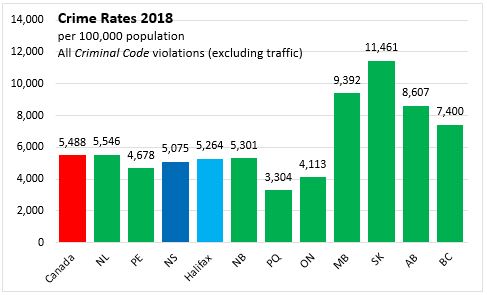
Canada's crime rate (Criminal Code violations excluding traffic) was 5,488 incidents per 100,000 population. In comparison, Nova Scotia's crime rate for 2018 was 5,075 per 100,000 population. Nova Scotia’s total crime rate was below the national rate for the fourth consecutive year following nearly two decades above the national rate. Halifax's crime rate was above the provincial rate for the second year in a row, with 5,264 incidents per 100,000 population.
Property crimes accounted for the majority of crimes - for Nova Scotia 2,864 offences per 100,000 population in 2018. Property crimes accounted for 56 per cent of total Criminal Code violations (excluding traffic) while violent crimes accounted for 25 per cent. Among the provinces, property crime rates were lowest in Quebec and Ontario and highest in Saskatchewan. Violent crime rates were lowest in Ontario and Prince Edward Island and highest in Saskatchewan and Manitoba.


Canada's crime rate (Criminal Code, excluding traffic) increased by 2.1 per cent 2018. This is the fourth consecutive year of increasing crime rates for Canada, following declining rates for the 11 years before 2015. The 2018 national crime rate is lower than rates observed prior to 2013. Among provinces, crime rates were only down in Quebec and Saskatchewan last year. The largest increases in crime rates were reported in Prince Edward Island and Ontario.
Nova Scotia's crime rate increased 0.2 per cent with a 3.0 per cent increase in Halifax. These increases follow an upturn in 2017, and six consecutive years of decline prior to 2017, for crime rates observed for the province and Halifax. The province's total, violent and traffic violations (Criminal Code) were up in 2018, while property and drug crime rates were down. In Halifax, crime rates for total, violent and property were up in 2018, while rates for drug and traffic (Criminal Code) decreased.
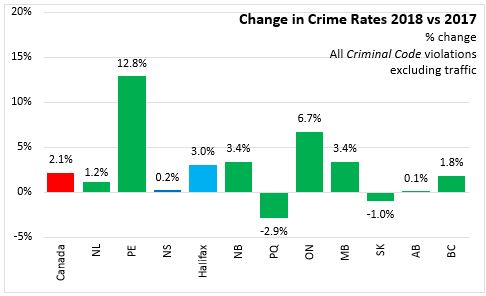
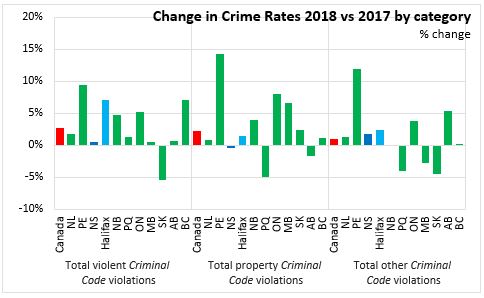
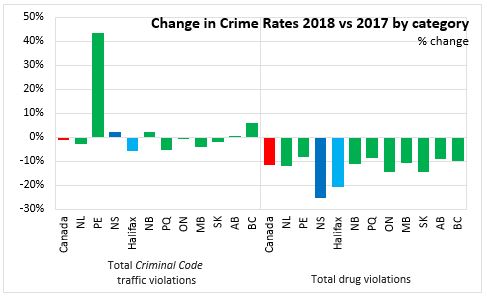
In Nova Scotia in 2018 there were 11.35 Youth Criminal Justice Act violations per 100,000 population. In Halifax, that number was 9.06. Note that youth crime more broadly can include offenses beyond the Youth Criminal Justice Act. The youth crime rate (youth charged per 100,000 population aged 12 to 17) was 1,537 in Nova Scotia in 2018. In Halifax, the rate was 1,651. Nationally, the youth crime rate was 1,500 in 2018, with the highest rate in Saskatchewan and the lowest in British Columbia.
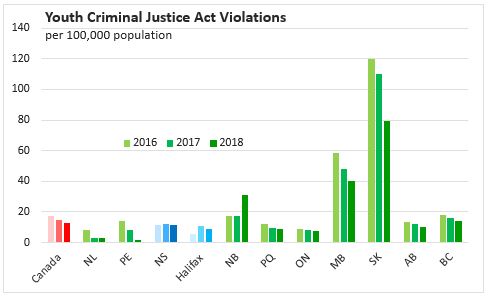
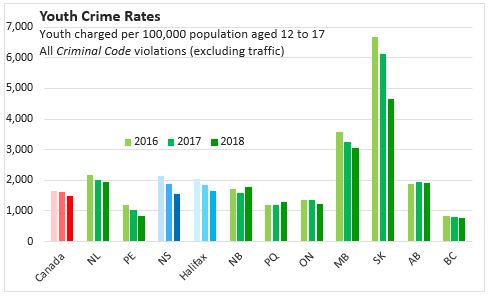
The overall severity of crime, as measured by the Total Crime Severity Index (CSI), decreased for Nova Scotia (-1.6 per cent) and increased for Halifax (+2.1 per cent) in 2018. Nationally, the Total CSI increased 1.9 per cent in 2018. Higher rates of fraud, sexual assault (level 1), shoplifting and theft were contributing factors to the national increase. For Nova Scotia, higher rates of sexual assaults (level 1) and fraud partially offset declines in other violations. The severity of violent crime decreased in Nova Scotia (-0.8 per cent) and increased in Halifax (+8.5 per cent). Non-violent Crime Severity decreased provincially (-2.0 per cent) and for Halifax (-1.5 per cent).
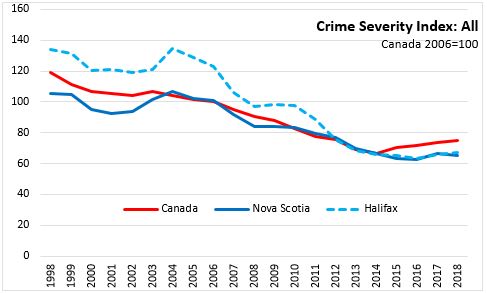
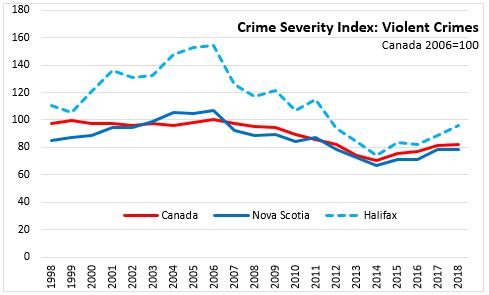
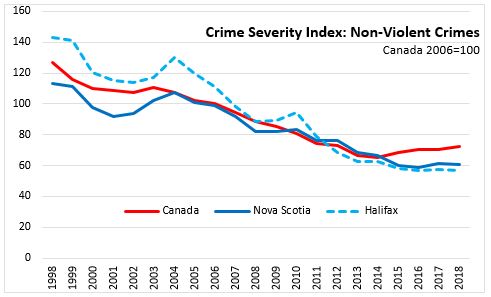
It should be noted that on January 1, 2018, Statistics Canada, in collaboration with police, changed the definition of “founded” criminal incidents. With the new definition, there is the potential that police will classify more incidents as founded.
Source: Statistics Canada, Tables 35-10-0177-01 and 35-10-0026-01
<--- Return to Archive